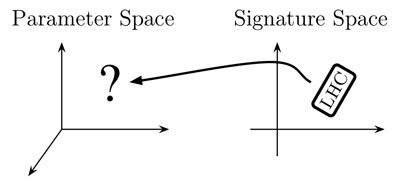The Harvard Black Box

The Harvard LHC Olympics group has constructed a black box of new physics signals, representing 40 fb-1 of collected data at the LHC. Some of the obvious aspects of the data and relevant plots are presented below. The most prominent features are the presence of events with missing energy and events with diphotons. Also, a histogram of the dilepton invariant mass has a prominent bump near 1.5 TeV.
We have developed a user-friendly Mathematica package allowing a simple way to make histograms of any desired distributions, for any black box sample. A tutorial for this package together with many worked examples has been provided. This should make it easy and fun for anyone to play with any of the black box data sets.
The Harvard LHC Olympics group consists of Nima Arkani-Hamed, Lian-Tao Wang, as well as a team of graduate students who have been largely responsible for generating the black box and writing the analysis software codes. The black box was generated by Matt Baumgart, Cliff Cheung, Liam Fitzpatrick, Tom Hartman, Can Kilic, and Jesse Thaler. The Mathematica analysis package was written by Philip Schuster and Natalia Toro, with additional functionality and C code cross checks by the generation team.
See the Official LHC Olympics page for more information on how events were generated and techniques for analysis. Email Jesse Thaler if you are having trouble downloading any of the files on this page.
We have developed a user-friendly Mathematica package allowing a simple way to make histograms of any desired distributions, for any black box sample. A tutorial for this package together with many worked examples has been provided. This should make it easy and fun for anyone to play with any of the black box data sets.
The Harvard LHC Olympics group consists of Nima Arkani-Hamed, Lian-Tao Wang, as well as a team of graduate students who have been largely responsible for generating the black box and writing the analysis software codes. The black box was generated by Matt Baumgart, Cliff Cheung, Liam Fitzpatrick, Tom Hartman, Can Kilic, and Jesse Thaler. The Mathematica analysis package was written by Philip Schuster and Natalia Toro, with additional functionality and C code cross checks by the generation team.
See the Official LHC Olympics page for more information on how events were generated and techniques for analysis. Email Jesse Thaler if you are having trouble downloading any of the files on this page.
Black Box Data
The Harvard Black Box is stored on the Fermilab servers. You must enter your email address to access the data, so that we can keep you informed about any changes to the black box data.
There are two data sets: a 40 fb-1 sample as well as a smaller 5 fb-1 sample. They are:
The 40 fb-1 data sample is also available in eight separate files.
Note that the 5 fb-1 and 40 fb-1 data sets are not independent. Though the 5 fb-1 data is not a proper subset of the 40 fb-1 data, there share many events in common because they come from essentially the same random number seed.
Rough signatures and kinematic distributions are available for the 5 fb-1 data set. Information on how to decypher the data files are available at the Official Black Box page.
Rough signatures and kinematic distributions are available for the 5 fb-1 data set. Information on how to decypher the data files are available at the Official Black Box page.

